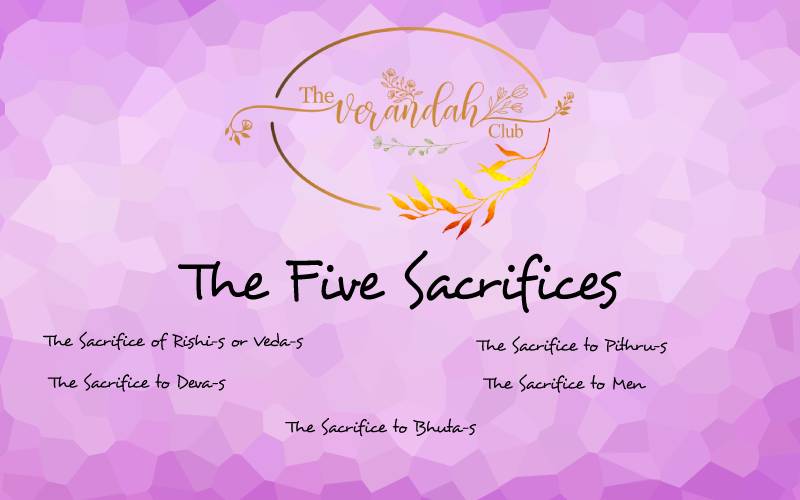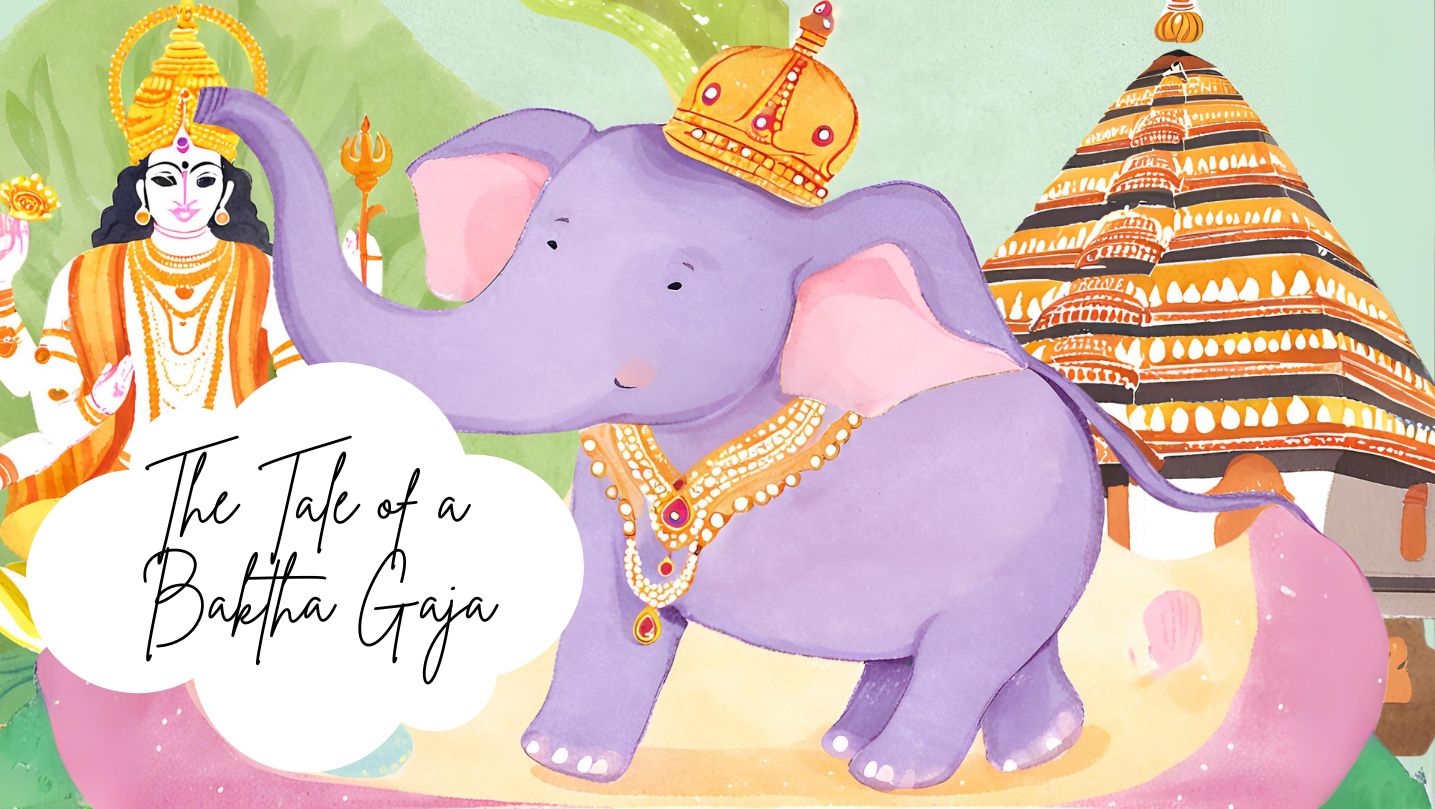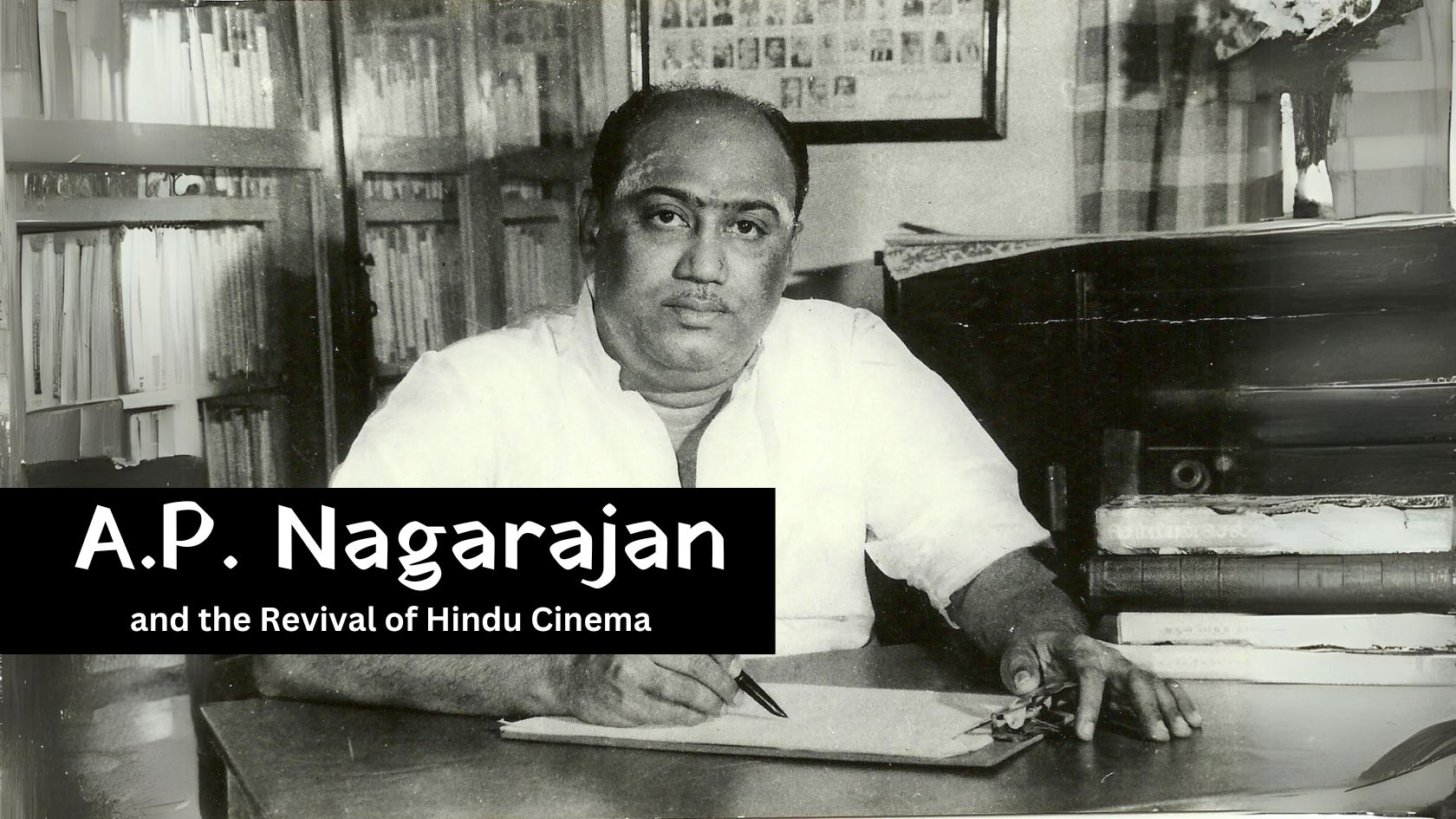
The life of a Hindu is filled with numerous sacrifices. Unaware of the meaning behind several sacrifices, nowadays it is merely performed for the sake. This is mainly because our connection with the past, which is the only way of understanding, is distorted. The good thing is that a little thinking to any ritual reveals the meaning by itself, just as the flowers blossom on facing the sun. This article is presented to understand various prescribed sacrifices in a Sanatana Dharmi’s life with its purpose.
The five sacrifices prescribed according to the law of Yagna-s are,
The Sacrifice of Rishi-s or Veda-s
The best sacrifice that can be offered to the Rishi-s and the Veda-s is to study them and teach. Studying Veda-s formally under a Guru is essential. This is being pointed because the concepts explained in the Veda-s should be clearly learnt under proper guidance before it is taught to someone else. But presently there are many other self-study spiritual texts available at everyone’s vicinity. All must make it a habit to learn a portion of the books based on our scriptures to gain knowledge. After studying constantly over a period, teach them rightly to the next generations to pass on the legacy. Children must also be made to learn interesting, and valuable Pauranic stories, which can also be listed in the sacrifice performed towards Rishi-s and Veda-s.
The Sacrifice to Deva-s
Sanatana Dharma is a religion which is specific in nature. There is a presiding deity for every aspect in life, i.e., from health to wealth. One may question why? It is to keep in harmony with nature. We see the omnipresent, God in everything and it becomes a sacrifice when we tend to protect and conserve nature. Our culture values planting and protecting a sapling equal to that of growing and nourishing a child. Thus, by standing in line with the nature and the working intelligence behind each action, we carry out the sacrifice towards Deva-s.
The Sacrifice to Pithru-s
One of the greatest debts that every human being owe is that towards one's forefathers. Without them, we would not be what we are. Recognizing them and their valuable contributions that has been passed down for generations is exceptionally important. We do that when we perform the ritual of Pithru Tharpanam. Acquiring wealth is one form of prosperity, we also turn prosperous when we have the right knowledge of our ancestors and of the lineage that we belong to.
The Sacrifice to Men
It is prescribed in our Shastra-s that every human being should feed someone poor. Through this sacrifice, it is implied that the whole world is one family, Vasudheiva Kutumbakam. The denotative meaning of the sacrifice is that everyone must inculcate the attitude of serving towards our brethren. Offering clothes, food, loving words also comes under this sacrifice.
The Sacrifice to Bhuta-s
Bhuta-s are nothing but the beings and natural forces around us which includes both visible and invisible creatures. In whatever ways possible, by leaving some food on the ground before we eat, by feeding the left over food to animals, or by praying sincerely to the forces that protect us, we contribute to this sacrifice. It becomes essential because our surroundings play a pivotal role in our existence. Any change in their composition affects us. And so, we are greatly indebted to them and performing this sacrifice is more significant.
Conclusion
A man’s wellbeing lies in voluntarily performing these prescribed sacrifices with right understanding. These sacrifices help in understanding the importance of harmonious living which paves way to happiness. They teach us that we must be committed to take care of the whole lot around us as everything becomes a part of the universal self.

T. R. Surya is the special correspondent of the company. He is an eloquent speaker and compendious writer of English. An avid learner of Sanskrit and Indian scriptures under the guidance of Swami Ganeshaswarupananda and Gita Chaitanya of Arshavidyalaya. His inclination and interests are towards studying Metaphysics and philosophies.
NEXT ARTICLE

In the lush, green heart of Kerala lived an elephant who became a living legend - a tale of an elephant turned into a bakth. His name was Keshavan, bu...

In the early days of cinema, both silent and talkie films thrived on puranas and ithihasas. However, as the years passed, especially by the late 1950s...

Life often presents us with choices that test our resolve, faith, and priorities. Attending the Prana Pratishtha of the Ram Lalla in Ayodhya had alway...